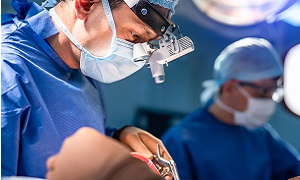Best Doctors in India for Foraminotomy procedure
Best Hospitals in India for Foraminotomy procedure
- City: Bengaluru, India
Hospital Highlights:
- Fortis Hospital Bannerghatta, Bengaluru was established in 2006.
- The hospital is a 276 bedded multi-specialty tertiary care facility.
- The hospital specializes in cutting-edge medical technology and dedicated patient care services.
- The hospital is equipped with state-of-the-art technologies like trans-radial angioplasty, trans-abdominal cardiac surgery, and computerized TKR navigation surgery.
- The hospital provides specialty medical services in cardiology, cardiac surgery, orthopedics, neurology, neuro-surgery, GI, and Minimal Access Surgery (MAS).
- City: Chennai, India
Hospital Highlights:
- Fortis Malar was established in 1992 and was formerly known as Malar Hospital.
- The hospital specializes in cutting-edge medical technology and dedicated patient care services.
- The hospital is multi-specialty, tertiary care facility with 180 beds.
- The hospital offers comprehensive medical care in specialties such as cardiology, cardio-thoracic surgery, neurology, neurosurgery, orthopedics, nephrology, gynecology, gastroenterology, urology, pediatrics, and diabetes.
- City: New Delhi, India
Hospital Highlights:
- Established in 1996, Pushpawati Singhania Research Institute is one of the top hospitals in the NCR region, as well as one of the top facilities in India for gastroenterology. The hospital is one of South Asia’s first institutes in medical and surgical treatment for diseases related to digestion.
- The hospital is equipped with state-of-the art facilities coupled with the latest equipment as well as renowned consultants from various parts of India as well as other parts of the world.
- City: New Delhi, India
Hospital Highlights:
- State-of-the-art technology and devoted healthcare professionals have been brought together under one roof at Venkateshwar Hospital to provide genuine medical care. The hospital’s professionals work together as a team to deliver the best possible treatment to their patients, using the most sophisticated equipment and information technology.
- Venkateshwar Hospital’s mission is to attain global excellence in healthcare by employing evidence-based, ethical clinical practices and cutting-edge technology by a team of highly skilled experts.
- City: New Delhi, India
Hospital Highlights:
- Sir Ganga Ram Hospital, New Delhi is known to provide the latest medical procedures with the latest technology in all of its units.
- The hospital has a team of reputed doctors, nurses, and healthcare professionals that ensure that patients receive quality care at affordable costs.
- Staffed with a team of highly qualified doctors, dedicated nurses, and paramedical and non-medical staff, the hospital aims to lead in healthcare delivery, medical education, training, and research.
- As per the vision of the founder, the hospital also provides free treatment to the economically weaker sections of society.
- Sir Ganga Ram Hospital also provides training to young doctors under the Diplomate in National Board(DNB) program. The DNB program at the hospital was started in 1984 and it is known for currently running the maximum number of DNB specialties in the country. It also has the distinction of having the first bone bank in India.
- City: Kerala, India
Hospital Highlights:
- Established in 2019, Apollo Adlux Hospital is the first Apollo Hospital in Kerala and the 73rd hospital owned by Apollo Group in India. With the state’s most advanced, comprehensive healthcare infrastructure and cutting-edge technologies, Apollo Adlux Hospital stands as an example of medical excellence in Kerala.
- With over 34 multi-specialty departments, the hospital believes in providing the best quality treatment to its patients at affordable rates, ensuring comfort at their difficult times.
- The 300-bed hospital is managed by a team of highly qualified and experienced experts who delivers exceptional hospitality to their patients and treats them with great compassion.
- With its affiliation with the Apollo Hospitals Group, the hospital aims in providing patients with top-notch healthcare services while also serving communities in Kerala.
- The hospital has good railway and road connections, and is conveniently close to Cochin International Airport.
- City: Gurugram, India
Hospital Highlights:
- Situated near DLF Cyber City, Gurugram, Narayana Superspecialty Hospital is one of the top medical facilities in the Delhi NCR region, catering to the needs of the people. Known for its commitment to quality medical care and patient service, the hospital is a state-of-the-art facility with planned and well-equipped sections, which includes a spacious OPD area as well as comfortable patient rooms.
- It is the closest super-specialty hospital from Indira Gandhi International Airport towards Gurugram, and also the nearest super specialty hospital from DLF Cyber City. It is also close to major residential areas in Gurugram.
- It is part of the renowned Narayana Health Group. Established in 2000, by Dr. Devi Shetty, a renowned cardiac surgeon, it has grown to be one fo India’s leading healthcare groups.
- City: Noida, India
Hospital Highlights:
- Fortis Hospital, Noida, stands as one of the oldest and most trusted healthcare institutions in the region, setting a benchmark for comprehensive medical care.
- As the second mega hub hospital in the Fortis Healthcare Group, Fortis Hospital, Noida, upholds a legacy of trust among more than 1.2 million patients. By integrating top-tier professionals with cutting-edge technology, the hospital delivers superior treatment across various medical disciplines.
- Specializing in advanced Neurosciences, Orthopedics, Kidney and Liver Transplant Programmes, Fortis Hospital, Noida has successfully performed over 1,500 transplants, solidifying its reputation as a leader in specialized medical interventions.
Foraminotomy
Foraminotomy is a surgical procedure which is performed for decompressing i.e. removing pressure on a spinal nerve root.
The term comes from the spine’s foramen, which is the hollow nerve passageways, through which your nerve roots exit the spinal column. The procedure is performed in the thoracic spine, cervical spine as well as in the lumbar spine.
Purpose
Blockages that lead to your spinal column getting narrowed or an intervertebral foramen getting blocked are termed as spinal stenosis. There are various processes which can lead to your intervertebral foramen getting blocked and the nerve getting compressed, leaving the spinal cord.
Conditions that can lead to spinal stenosis include:
- Degeneration of the intervertebral discs, which can cause them to bulge into the foramen
- Cysts or tumors
- Degenerative arthritis of the spine (spondylosis), which can lead to bony spurs
- The nearby ligament getting enlarged
- Skeletal disease
- Congenital problems like dwarfism
Degenerative arthritis of the spine, which comes from old age, is generally the most common cause of spinal stenosis.
This nerve compression might occur along any part of the spinal column. Your compressed nerve might be leading to symptoms, such as pain in the affected region as well as tingling and weakness in your affected limb. A foraminotomy might also be required if you have already tried other treatments but had no success. This can include physical therapy, pain medicines, as well as epidural injections.
Though generally this surgery can be performed as an elective procedure for helping relieve these symptoms, in some cases you might also need to have an emergency foraminotomy if your symptoms get worse quickly or if you are having problems in your bladder caused by your nerves.
Preparation
Your doctor will provide you instructions regarding getting ready for your surgery. Ask him/her if you will need to stop taking any kind of medications, such as blood thinners. You will also need to avoid food and drink after midnight on the night before the procedure.
Before your surgery, your doctor might also order additional imaging tests for getting more information about your nerves and spinal column. Generally, an MRI is the most common test which is performed.
Procedure
The procedure is minimally invasive and can be performed at any level of your spine. Before the procedure, general anesthesia is used.
During the surgery, first, you lie down on the operating table. An incision is first made in the middle of the back of your spine. The length of the incision generally depends on how much of your spinal column is going to be operated on. Skin, muscles as well as ligaments are moved to the side. A surgical microscope is required in some cases so that your surgeon can see the back.
Some bone is cut or shaved away for opening the nerve root opening, i.e. foramen. Disk fragments causing the blockage will be removed. If other bone at the back of your spine also requires removal, your surgeon might need to perform any additional procedure such as laminotomy. Then your surgeon might perform a spinal fusion to make sure that your spine is stable after the surgery. Then the muscles and tissues are put back in place, and the skin is sewn together.
Aftercare & recovery
Few hours after the procedure is done, you should be able to sit up in bed. If there is any pain, you can control it with medications. You should also be able to eat a normal diet unless your doctor recommends against it.
Patients are generally able to go home in a day or two following the procedure. Make sure that you follow your doctor’s instructions regarding wound care, physical activity as well as medications. Sometimes people might also need physical therapy after this procedure. After a few weeks, you should be able to perform light work.
Keep your follow-up appointments with your doctor and discuss with him/her about any new worsening symptoms following foraminotomy.
Around 80-90 percent of patients generally benefit from this surgery and are also able to maintain it long term.
Risks
Though foraminotomy is successful in most people and there is very minimal risk associated with the procedure, in some rare cases, there might be few complications which can include:
- Infection
- Nerve damage
- Damage to the spinal cord
- Excess blood loss
- Stroke
- Complication from anesthesia
Other than these complications, there is also a slight risk that your procedure will not relieve your pain. The risk of complications that arise out of the procedure can generally vary from person to person depending on several conditions such as age, anatomical location of the surgery in the spine, the patient’s medical condition, etc.










